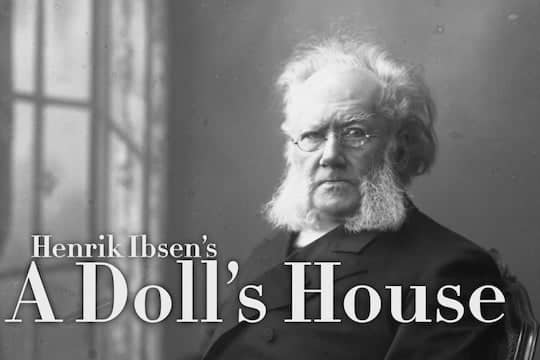
Classical tragedy in most Greek and Elizabethan drama involves protagonists who are kings or members of the aristocracy in society. Their subsequent downfall is even more tragic due to their rank.
But the Elizabethan period also witnessed the birth of a new form of tragedy that saw the protagonist as the common man. These works normally had a domestic setting, probably originated out of the religious morality plays of the medieval period (the common man as the protagonist eg. Everyman) and were similar to 1950s British plays of the kitchen sink genre (domestic setting).
Over the centuries, dramatists have portrayed the tragic hero in many different ways. At the end of the 19th Century, many of the plays of Henrik Ibsen saw heroes who were everyday people, perhaps the character of Nora in A Dolls House (1879) being the most famous. Several of Ibsens dramas are considered fine examples of the domestic tragedy genre.
These famous plays are considered domestic tragedies:
- Henrik Ibsen’s A Doll’s House and Ghosts
- William Shakepseare’s Othello
- Eugene O’Neill’s The Iceman Cometh
- Thomas Middleton’s A Yorkshire Tragedy
Some thoughts on perhaps the most famous domestic tragedy of them all…
Henrik Ibsens A Dolls House is a landmark in modern playwriting. If we look back over theatre history, few plays have a woman as the protagonist (central character). Whilst some of the Greek plays contained this factor (Euripides’ Medea, Sophocles’ Antigone and Aristophanes’ Lysistrata which has an almost all-female cast) we must not forget that only men were permitted to act in these plays when first performed. The same applies to Shakespeare and his contemporaries, as it was not until after the Restoration in 1660, that women were allowed to act on the English stage for the first time. It is well known that young boys were playing such roles as Juliet in the days of Shakespeare.
So in 1879 in Copenhagen, Denmark, the world witnessed the opening of Ibsen’s remarkable play A Dolls House with the protagonist Nora, being performed by a woman. The play caused a near-riot. The sensation was all to do with a wife leaving her husband, which the critics and theatre-going public considered too risque for the times. Not deterred, Ibsen soon opened the play in Berlin.
It is a little-known fact there are actually two endings to A Dolls House. At the Berlin premiere the theatre manager also found the conclusion to Ibsen’s play too dangerous. The result was a re-write and Ibsen was forced to write an alternate conclusion where Nora remains with her husband and children, instead of leaving. Unhappy with the dent on his artistic integrity, Ibsen thereafter returned the play to its original ending and until this day the standard edition of A Dolls House has Nora walk out on her family in the final scene.
It is no accident Ibsen titled this play A Dolls House, as Nora is her husband Torvald’s little plaything; his doll. Throughout most of the drama Nora has clearly been subservient to her dominant husband, but in this final section of the play, Nora is a strong woman, fighting to keep herself together as she decides to tell her husband she is leaving him and their small children, forever.